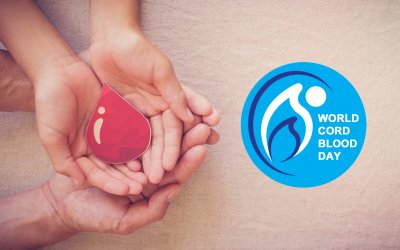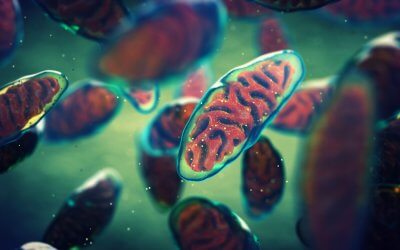Stem cell treatments and clinical trials
One day, stem cell treatments could…

Repair damaged tissue

Regrow and replace worn out organs

Cure life-threatening diseases
Cord blood stem cells are a precious resource that have been saving lives for more than three decades. Since 1988, there have been more than 1 million stem cell treatments worldwide6 and umbilical cord blood stem cells are the recognised therapy for over 80 diseases.12 These include various cancers, blood and immune disorders.
Stem cells are also considered to be a cornerstone of a relatively new area of science known as regenerative medicine. Today there are hundreds of clinical trial investigating the use of stem cells to treat common and often life-threatening conditions such as heart disease, Alzheimer’s and diabetes. Within your child’s lifetime their cord blood may even be used to repair spinal damage, print kidneys or grow a new heart.
Cord blood stem cells really are the future of medicine. Find out more about stem cell collection or request an Information Pack to secure this life saving resource for your baby.
Available today to treat:
Metabolic Disorders:
Blood Cancers:
Solid Tumours:
Immune Disorders:
Blood Disorders:

Stem cell treatments today
Umbilical cord blood contains millions of haematopoietic stem cells (HSCs). These are the stem cells that can transform into any type of blood cell. Because of this ability, cord blood can be used to rebuild the immune system of patients whose white blood cells are decimated by aggressive cancer therapies and those who suffer from genetic conditions of the haematopoietic system.
HSCs are the primary cell type used for today’s stem cell treatments, and have been proven to be safe and effective in thousands of treatments and trials.
Stem cell treatments in the future
Regenerative medicine is a relatively new branch of therapy that deals with replacing, creating and regenerating human cells, tissue and organs. Regenerative therapies aim to restore normal function for those afflicted with injury or disease or introduce normal function for the first time for conditions suffered from birth.
Stem cells are central to the development of regenerative medicine and cord blood stem cells in particular show a great deal of promise due to their pure and plastic nature.
Stem cell researchers are currently conducting more than 7,600 clinical trials to investigate the application of stem cell treatments for hundreds of different conditions, many of which, up until this point, have been incurable. You may have heard news stories about stem cells helping a paralysed man to walk again or restoring sight to sufferers of blindness.
Therapies like this used to be the stuff of science fiction but regenerative medicine is helping scientists to make it reality. The growth of this new area of stem cell therapy is demonstrated by the fact that 48% of cord blood bank releases have been for regenerative treatments. It is often for its regenerative potential that so many families choose to store their children’s cord blood.
Cerebral Palsy
The routine use of cord blood stem cells in regenerative therapies is not as far off as you might think…
Cerebral palsy is a term that describes a variety of brain conditions that emerge in early childhood and affect coordination and movement. It is usually caused by a trauma to the brain suffered in the womb or during birth. In the UK, 1 in 400 children will suffer from cerebral palsy and to date, whilst palliative therapies exist, there is no treatment for the condition itself.
However, cord blood could provide the solution. In 2012, Dr Joanne Kurtzburg began enrolling cerebral palsy sufferers whose parents banked their cord blood at birth on a pioneering clinical trial investigating the use of stem cells to treat the condition.
Whilst it is too early for final results, initial reports have been very positive with 70% of participants demonstrating improved brain development and motor skill. The success of this trial is highlighted by the continued development of the Duke University cord blood project. In June 2014, Dr Kurtzburg and her team were granted $15 million to investigate the application of cord blood stem cell treatments for other illnesses including stroke, autism and other brain disorders.
This money is the first instalment in the funding of this $41 million, 5-year project. The results of this program will be very exciting and such pioneering work would not have been possible without the thousands of parents who chose to bank their children’s precious cord blood at birth.
Your child’s key to the future…
Your baby’s cord blood could be their key to all of these stem cell treatments. Whilst there are some conditions – such as leukaemia – where a sibling’s or donor cells may be preferable, in many therapies, especially regenerative treatments, having access to their own stem cells is far better. All donor samples are matched to the recipient but there is a risk that when they are introduced into the human body during treatment they will be rejected. This is called graft-versus-host disease and can cause extremely serious side effects, including death.
Storing your baby’s own stem cells ensures that they have their own perfect genetic match ready and waiting – one that could provide access to all these stem cell treatments and more… one that will never be rejected.
About cord blood clinical trials…
Latest Stem Cell News
World Cord Blood Day 2025
Today is World Cord Blood Day! A lot of progress has been made since the very first cord blood transplant was performed in 1988, 37 years ago. Since then, over 60,000 cord blood transplants have been performed worldwide, and cord blood stem cells have become the...
Stem Cell Treatment Could Help Newborns With Brain Damage
A recent study conducted at UMC Utrecht, Netherlands, has shown that mesenchymal stem cells (MSCs) are a safe treatment for brain damage caused by stroke in newborns, and could have a significant positive effect. Perinatal stroke and its consequences Perinatal stroke...
Could Mitochondria Transplantation Roll Back Ageing?
A groundbreaking therapy based on transplanting mitochondria into blood stem cells has shown encouraging results in an ongoing, phase 2 trial. If successful, the therapy could not only treat rare, incurable diseases, but also potentially help reverse some of the...







